Invented by Kerri Ann Stone, Ronald Lance Justin, Jennifer Lynn Ryan, LGS Innovations LLC, CACI Inc Federal
Rogue base station routers, also known as fake cell towers or IMSI catchers, are devices that mimic legitimate cell towers to intercept and monitor cellular communications. These malicious devices can be used for various purposes, including eavesdropping on conversations, stealing sensitive information, or launching targeted attacks.
Traditional methods of detecting rogue base station routers have proven to be ineffective, as these devices can easily evade detection by exploiting vulnerabilities in the cellular network infrastructure. This has led to the development of machine learning algorithms specifically designed to identify and mitigate the threat posed by rogue base station routers.
Machine learning algorithms leverage the power of artificial intelligence to analyze vast amounts of data and identify patterns that may indicate the presence of a rogue base station router. These algorithms can be trained on large datasets containing information about known rogue devices, enabling them to recognize similar characteristics in real-time.
One of the key advantages of using machine learning algorithms for detecting rogue base station routers is their ability to adapt and learn from new threats. As cybercriminals constantly evolve their tactics, traditional detection methods quickly become outdated. Machine learning algorithms, on the other hand, can continuously learn and update their models to stay ahead of emerging threats.
The market for machine learning algorithms in this domain is driven by the increasing demand for robust cybersecurity solutions. Organizations across various sectors, including government agencies, financial institutions, and telecommunications companies, are investing heavily in technologies that can effectively detect and mitigate the risks associated with rogue base station routers.
Furthermore, the proliferation of Internet of Things (IoT) devices and the growing reliance on wireless communication technologies have further amplified the need for advanced detection mechanisms. Machine learning algorithms offer a scalable and efficient solution to address this challenge, as they can be deployed across large networks to monitor and identify rogue devices in real-time.
Several companies and research institutions are actively developing machine learning algorithms for detecting rogue base station routers. These algorithms are often integrated into existing cybersecurity platforms or offered as standalone solutions. Some companies also provide consulting services to help organizations implement and optimize these algorithms within their existing infrastructure.
As the market for machine learning algorithms for detecting rogue base station routers continues to expand, it is expected that there will be a greater emphasis on collaboration and information sharing among industry stakeholders. This will enable the development of more robust and comprehensive solutions that can effectively combat the evolving threat landscape.
In conclusion, the market for machine learning algorithms for detecting rogue base station routers is witnessing significant growth as organizations recognize the need for advanced cybersecurity measures. These algorithms offer a powerful and adaptable solution to identify and mitigate the risks associated with rogue base station routers. As the threat landscape continues to evolve, the development and implementation of machine learning algorithms will play a crucial role in safeguarding wireless communication networks.
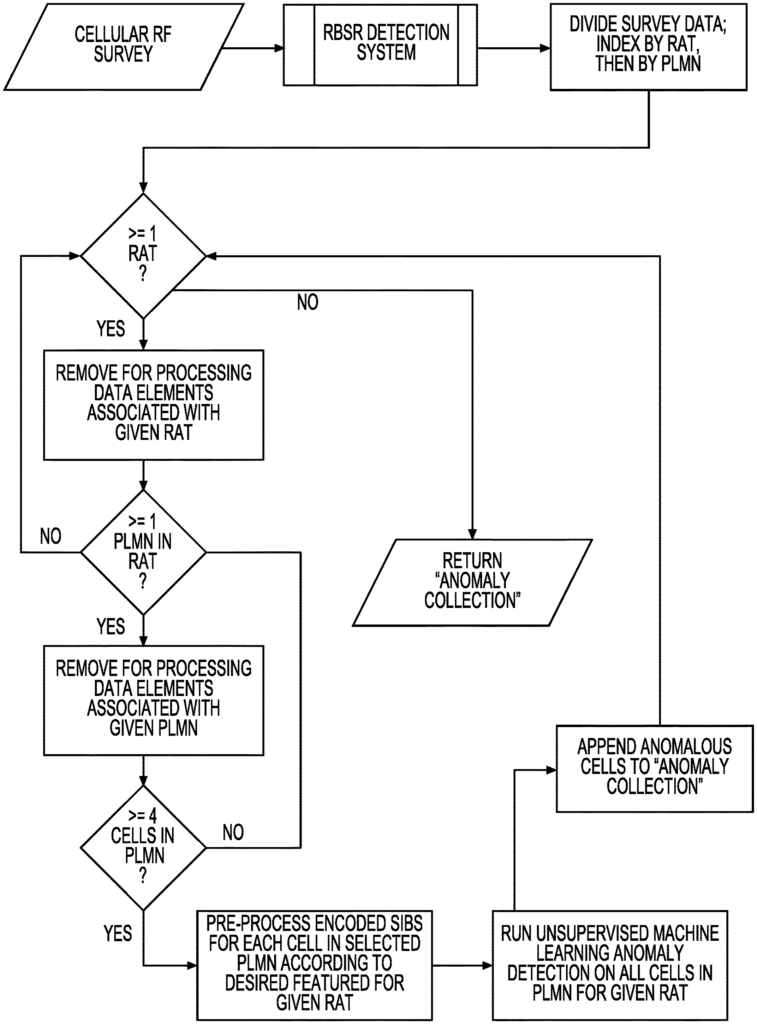
The LGS Innovations LLC, CACI Inc Federal invention works as follows
This application is a method to detect if an attack by a rogue router base station (RBRS) is active on a cell network. The method involves a survey of the network in order to gather broadcast data. A machine-learning algorithm based on the broadcast data is used to determine that a BSR in the network represents the RBSR. The method includes a step that determines if an event related to a cellular assault is present in the system. The method also includes a step of determining whether the cellular attacks from the RBSR are active based upon the determined RBSR, and the determined event related to a cellular assault.
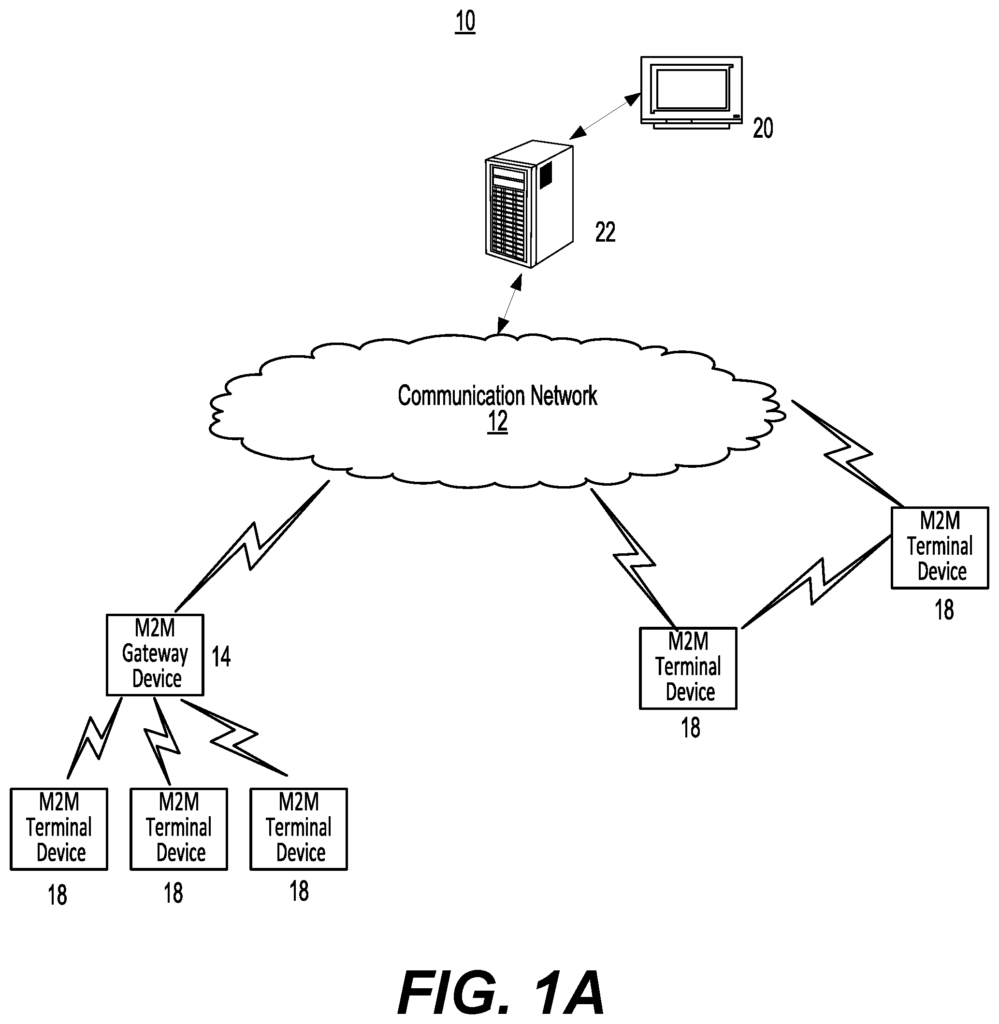
Background for Machine learning algorithms for detecting rogue base station routers
By 2020, there will be tens of millions of Internet of Things devices (IoTs) with wireless interfaces on the market and they will connect the modern world. Nearly half of these IoT devices are expected to have cellular radios. The likelihood of a cyber attack by an RBSR is increasing. RBSRs can be classified as cellular devices that transmit data outside of the regulatory authority.
Third parties can use open-source software and low-cost hardware to launch significant attacks against enterprise Wi-Fi networks and cellular networks. A malicious actor could, in fact, deny service to M2M networks and smart devices using a commercially available (COTS), open-source cellular base station (SDR) kit. A malicious actor could also remotely track people via their mobile phones, listen to communications and inject malicious code into devices. “The consequences can be anything from an unfavorable experience for the user and social disruptions to financial loss and negative exposure in the media.
There is a need for multiple cellular protocols to detect an RBSR such as a commercial cellular illegal tower.
There is also a requirement in the art for technologies and architectures that identify the technologies used (e.g. Open BTS, OpenAirInterfaceLTE etc.). “A detected RBSR.
There is also a requirement in the art of techniques and architectures to detect a precursor event for cellular attacks across multiple cellular protocol.
There is a need for new techniques and architectures to test a base-station router (BSR) within a cellular system.
The application is able to meet the above needs in a large part, with systems and techniques that detect RBSRs on multiple cellular protocols. The application also meets the foregoing requirements, which include systems and techniques to identify the technologies used by RBSRs in multiple cellular protocol.
One aspect” of the patent application relates to a computer system consisting of one or multiple computers that are configured to perform certain operations or actions. This is done by installing software, firmware, hardware or a combination of these on the system, which in turn causes the system to carry out the action. A computer program can be set up to perform certain operations or perform actions through instructions that are executed by an apparatus for data processing. A particular aspect involves detecting RBSRs in a network by performing a repeated cellular scanning across the network. The apparatus can also collect broadcast data from BSRs using the scan. The apparatus then distills the broadcast data collected into Abstract Syntax Notation One-encoded System Information Blocks (SIBs) The ASN.1 encoded SIBs undergo featurization and are then run through an unsupervised machine-learning algorithm. The unsupervised machine-learning algorithm uses featurized and encoded SIBs to determine which cells in the PLMN don’t exhibit characteristics of native BSRs. The apparatus also performs an action that calculates a confidence percent that the device could be an RBSR.
In another aspect of the application, techniques and architectural designs for identifying technologies used by a detected RBSR within a network are discussed. Specifically, SIB encoded information about a detected RBSR, is received, featurized, and then processed by a supervised algorithm.
Yet another element of the patent application is a system to test a cell network, including a nontransitory computer readable medium storing instructions that determine if there is an active cellular attack against a communication system. The instructions are executed on a processor, which can detect a BSR via a cell scan. The processor performs an action to determine if the BSR is an RBSR based on an unsupervised machine-learning algorithm that processes survey information associated with a PLMN for each radio access technology of interest. The processor also performs an action to determine if a cellular connectivity event is present in the system. The processor performs further actions to compute a confidence level for an active cellular assault based on the reviewed information and the determination of the type of event. The processor performs further actions to notify stakeholders about the active cellular attacks.
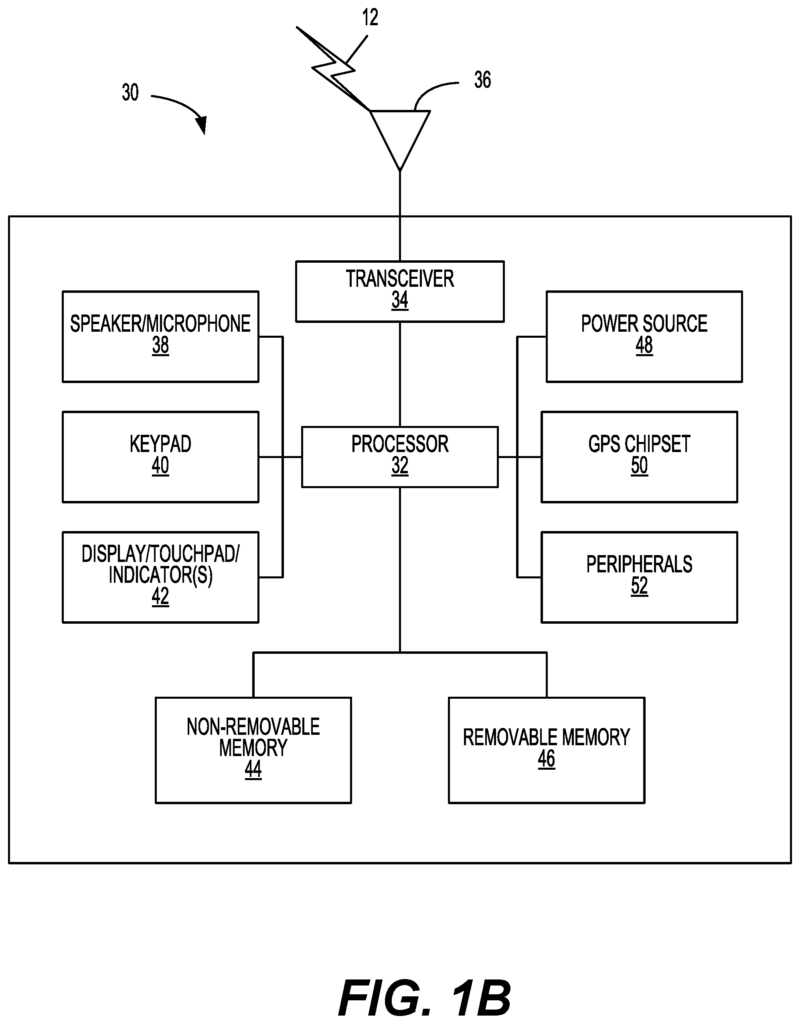
Another aspect of the application is directed at a system that includes a nontransitory computer-readable medium storing instructions to alert stakeholders of technologies used by detected RBSRs. The instructions are performed by a processor in order to configure an algorithm, which includes a supervised learning algorithm for identifying technologies used by a detected RBSR. The processor executes instructions to notify stakeholders about the technologies used by a detected RBSR after classifying them. So, stakeholders are able to make informed decisions about how to neutralize a detected RBSR.
Yet another aspect of the application is directed towards a system that includes a non-transitory, computer-readable medium storing instructions to facilitate the disablement of cellular-radios on stakeholders’ cellular-devices upon detecting an RBSR within the network. The instructions are performed by a processor in order to configure an algorithm which includes an unsupervised algorithm for detecting RBSRs within a cellular system. Upon RBSR discovery, the processor executes instructions to alert stakeholders that they should disable cellular communications on their devices until RBSRs have been neutralized. The processor executes a supervised learning algorithm to identify technologies used by a detected RBSR.
I have outlined certain embodiments in a broad way to make the detailed description of the application easier to understand and the contribution made by the present invention more apparent.” “There are of course other embodiments of the invention that will be described in the following paragraphs and will form the basis of the claims attached hereto.
The application does not limit its application to details of construction or to the arrangement of components as described in the description below or shown in the drawings. The application can have embodiments other than those described, and it can be practiced in different ways. The phraseology and terminology used herein and in the Abstract are only for description purposes and should not regarded as restrictive.
For the purposes of this application, a RBSR may be interchangeably referred as a rogue cellular antenna. A BSR is interchangeable with a cell tower.
In a patent application’s first aspect, an architecture that includes a non-transitory, computer-readable medium, such as a program application, storing the instructions to perform steps in detecting RBSRs within a network is described. GUIs on displays operably connected to the processor allow the user to view and manipulate the instructions and the progress of the steps. The executed instructions in one embodiment detect malicious or outlier base stations by analyzing the encoded system data (SI) that is wirelessly broadcast from them.
Accordingly to one embodiment, the executed instructions includes the steps of running an cellular scan across the region or network. The cellular scanning reveals various survey data, including SIBs, for devices within the network. “The processor that executes the instructions processes survey data to gather encoded SIBs from all cellular BSRs within radio frequency range (RF).
In another embodiment, a device uses an unsupervised machine-learning software algorithm to analyze a collection of SI broadcast parameters and triggers alerts/actions if one or more RBSRs are detected. Once executed, the algorithm can analyze broadcast parameters collected by PLMN or RAT. Machine learning detection algorithms are currently operating over 4G RATs, namely Long-Term Evolution and Universal Mobile Telecommunications System. The same method can be used to detect rogue LTE and UMTS cellular emitters. The algorithms for RBSR detection can be applied to other protocols, such as Code-division Multiple Access CDMA and Evolution-Data Optimized EVDO. “When one or more wireless cell signals are detected as outliers, it is reasonable to conclude that these flagged wireless cell signals are electronic impersonations of a commercial carrier?s tower within a cellular network.
In one embodiment, machine learning detection algorithms implement several unsupervised outlier detection techniques. These techniques include K-Means and Isolation Forest. Machine learning algorithms that use unsupervised outlier detection can be applied in any geographical area, without needing to know a priori information about the commercial carriers native to the region. The algorithm is lightweight and portable and can run on a wide range of different machines, from low-power Advanced RISC Machines (ARM) to high-powered Intel or AMD processors.
The unsupervised machine-learning detection algorithms use broadcast parameter transmitted by cellular carriers in order to determine what is “normal”? For each commercial cellular carrier that is scanned in the geographic area specified. Machine learning algorithms are not dependent on end-user configuration, and they do not take into account normal fluctuations between two towers in a commercial network carrier. The algorithm takes advantage of the fact that government-sponsored and open source cellular RBSRs typically are not able to match the cellular ecosystem exactly. The limitations of open-source and government sponsored cellular RBSRs are due to the software and/or hardware used. The machine-learning detection algorithms flag cells within the specified cell carrier that are anomalous in terms of parameters on the BCH.
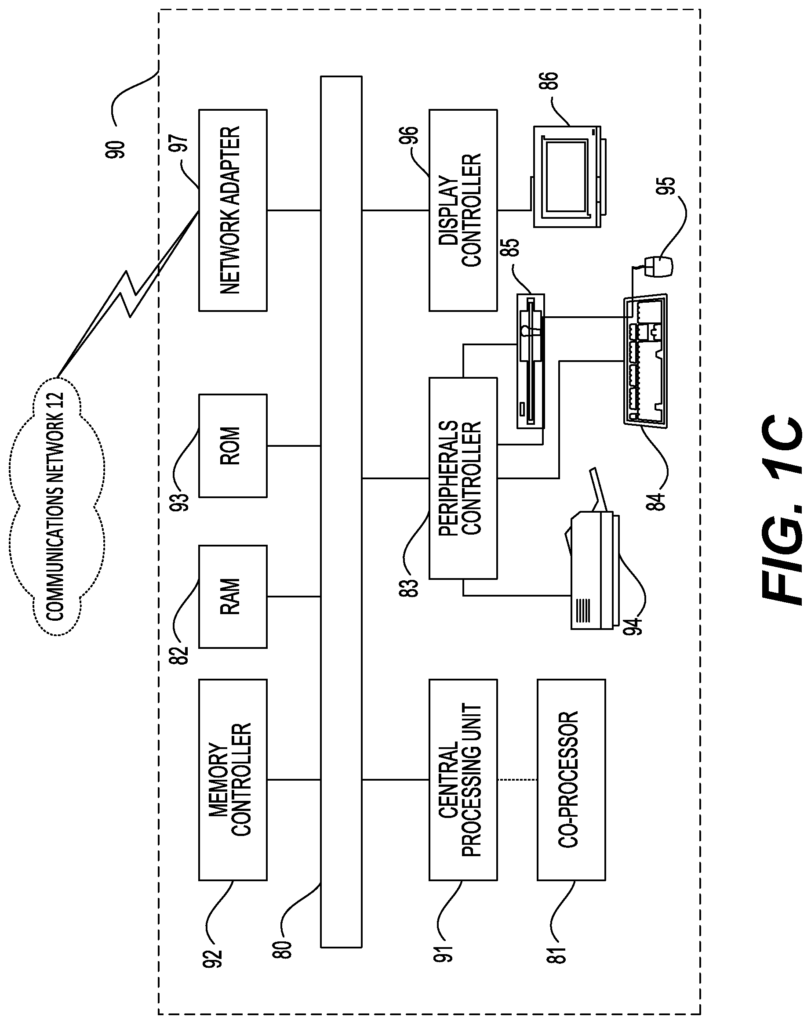
According to another aspect, the application includes a nontransitory computer readable medium, such as a program application, storing the instructions that when executed by a CPU, perform steps for identifying technologies used by detected RBSRs within a network. GUIs on displays operably connected to processors allow the user to view and manipulate the instructions and the progress of the steps. In one embodiment, executed instructions identify technologies used by malicious or outlier base stations using encoded SI wirelessly transmitted from there.
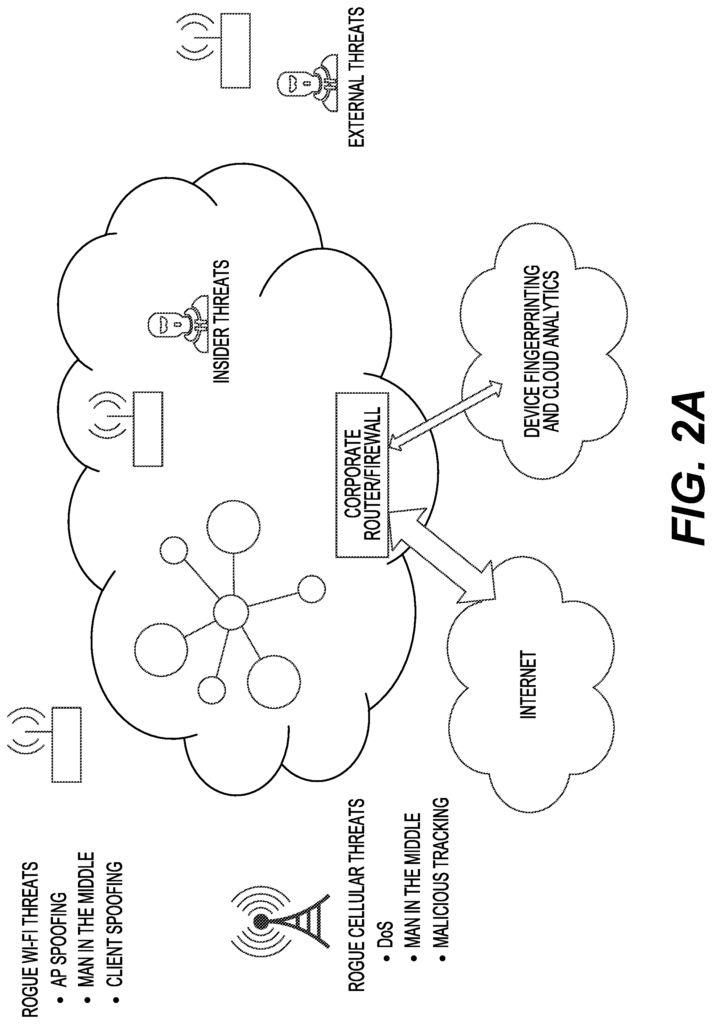
Click here to view the patent on Google Patents.
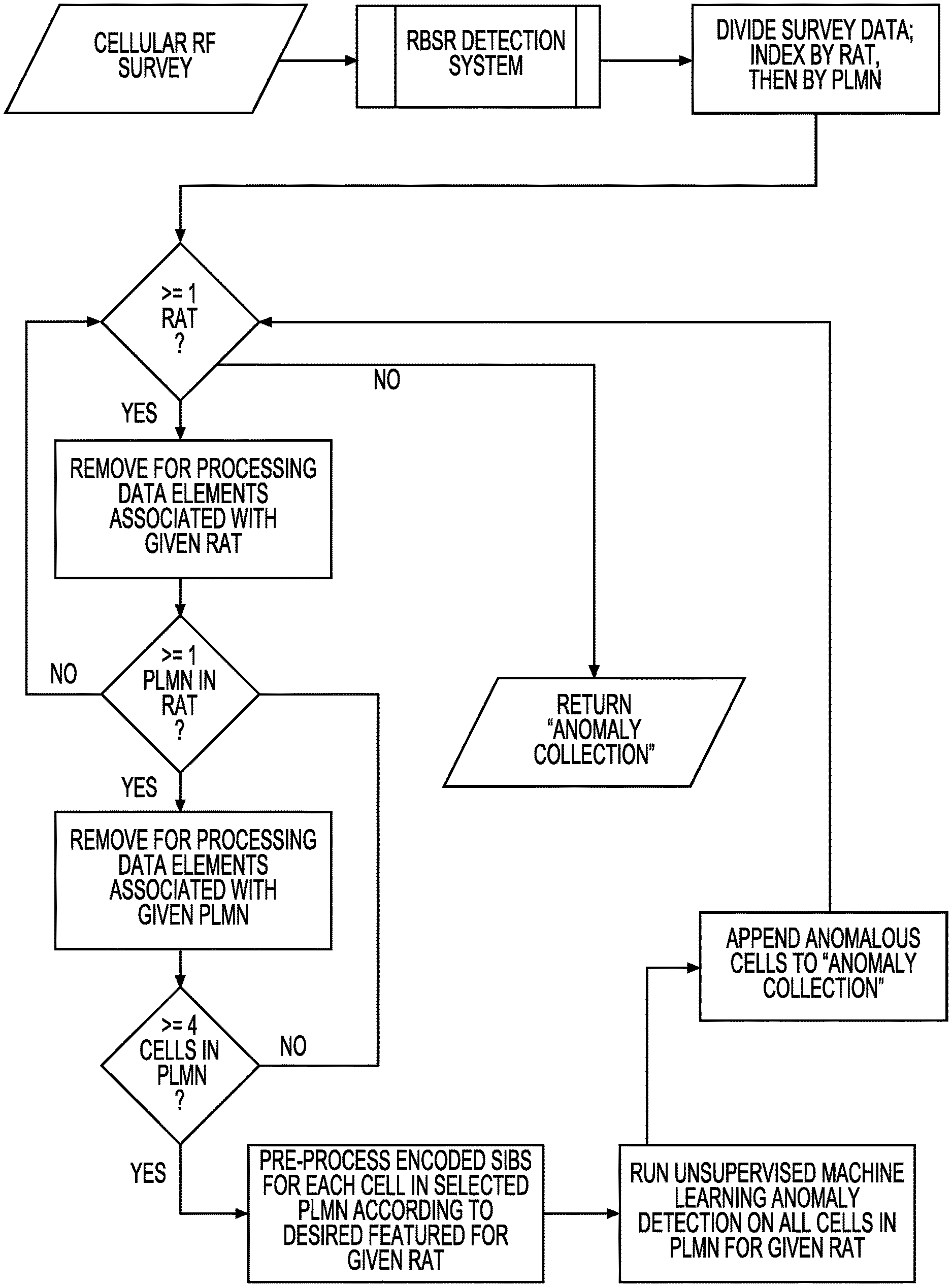
Leave a Reply